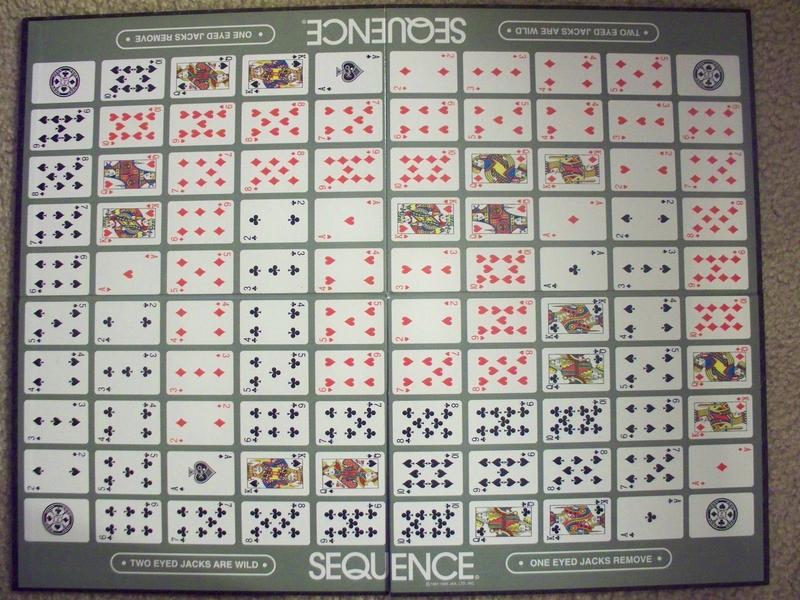Sequence is a game that uses a board, two decks of cards minus the jokers, and colored chips for game-play that combines strategy and luck. The board is laid out in a grid, each square depicting one card except for jacks, which are wild. At the four corners are squares that every player can use simultaneously as part of a sequence, the squares being whatever the players want them to be. By playing a card from your hand, you lay a chip on the board. The object is to lay five of your chips in a row on the board.
General Game Tips
As with any game of strategy, you have to use forethought in Sequence. You must keep in mind from the beginning that luck is an element, since you have no control over the hand you are dealt and the cards you’ll draw as you play; this means your plans will evolve and change as the game progresses. You must also realize that luck might stymie you or even help your opponent foil your plans. In other words, you’ll need to try to have more than one plan to form sequences, and know right off that Plan B or even Plan C might be promoted to Plan A.
Obviously, part of being able to plan effectively means trying to remember how many wild cards have been played, since these can upset your plans. To play Sequence successfully, you have to block your opponent, have contingency plans against bad luck and form plans that maximize good luck.

Evaluate with Every Turn
Since with every play the board will have changed, on every turn you need to reevaluate the board, what your opponent might be up to and what new opportunities there might be for you. Based on what you see, your choice comes down to either advancing your position or blocking your opponent.
Advancing your position might be better achieved through indirect routes rather than direct routes. In other words, it might be a good idea to misdirect your opponent's attention from your real opportunities for sequences to "fake" ones. Laying down cards that help you bluff--making your opponent think you have the means to get a sequence-let's you get rid of cards that are weak and can cause him to use up cards (hopefully wild cards) trying to block you. Just make sure you don't fall for the same ploy from your opponent.
Placing Chips
To get the maximum from your play, you want to place your chips as close together as possible and try to place them toward the center of the board so sequences can grow in more than one direction. Since sequences can run diagonally, horizontally and vertically, placing the chips near each other means chips can be part of more than one potential sequence.
Meanwhile, placing chips toward the center of the board rather than at the edge gives you two advantages. First, if your sequence is blocked at one end, you can still add to the other end. Second, you have room to try to build sequences of four that are open at two ends. If you can build a sequence fragment like this-assuming you are holding both cards that will let you finish the sequence-your opponent cannot stop you from finishing it even if she, too has both cards. (Remember, there are two decks of cards, so there are doubles of each one.) Your opponent can't prevent the sequence in this case because blocking one end won't prevent you from finishing the sequence on the other.
Hoarding
You will want to hoard some cards of promising sequences in your hand. Otherwise your opponent will get the chance to block you before you've even had the chance to build. Instead, build sequences that you don't think will pan out, trying to prevent your opponent from truly understanding your intentions.
It's especially important to hoard jacks. The two-eyed jacks can be played anywhere on the board. While it might be tempting to use them to block, they are better used to finish sequences, unless the other player or team is about to win and you have no choice.
The one-eyed jacks are used to remove one of your opponent's played chips. Again, unless it is an emergency, they should be used when you hold the other card so the opponent has no chance to rebuild a sequence. Try to use the one-eyed jacks when you are reasonably sure that the sequence fragment you are about to dismantle is a real effort to win by your opponent and not a bluff.
